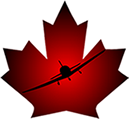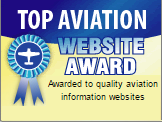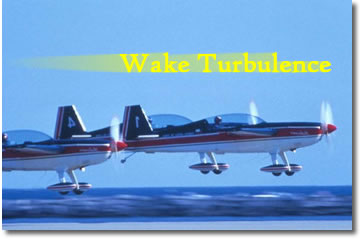 |
|
It’s summer and the weather is looking good. More people are climbing into aircraft; airports are busier. More air traffic can mean that time between aircraft take-offs and landings is reduced and the chance of encountering wake turbulence increases. As a student of mine said the other evening during ground school, “If you’ve never experienced it first hand, it’s hard to imagine how scary it can be.” I had an experience with wake turbulence myself not too long ago. We were returning to the airport after participating in a formation fly-by to honour a local legend who had taken his final flight. Flying a C-172, I approached for landing following the aircraft ahead. Apparently, I did not leave an adequate distance between us. There was a slight crosswind breeze from about 10 to 15 degrees to the left of the active. At an altitude of about 20 feet, the aircraft I was flying abruptly and briskly banked to the right and was carried laterally in the same direction right off the runway. We had encountered the left wing tip vortex of the Cessna ahead. My encounter was brief; I quickly applied power, continued my turn to the right and flew out of the turbulence before anything more exciting than a moment of embarrassment resulted. It was another excellent reminder, however, of what may result from a momentary lapse in attention and situational awareness and a casual underestimation of a potential hazard. Wake turbulence is caused by wing tip vortices resulting from the pressure differential between the underside of a wing and its upper surface. It is a by-product of lift. All aircraft that produce lift—aeroplanes, gliders, ultra-lights, helicopters—produce wing tip vortices and leave a trail of wake turbulence behind them as they fly. How strong the turbulence produced by an aircraft is a function of the weight of the aircraft, its speed through the air and the shape an size of its wings. The turbulence an aircraft produces is in direct proportion to its weight and in inverse proportion to its speed and wing span. Any particular aircraft produces its greatest turbulence when flying slowly at maximum weight in clean configuration. Take-offs and landings produce turbulence that may easily be encountered by other aircraft. Wing tip vortices are generated beginning at the moment of rotation, when an aircraft’s nose wheel lifts off the ground on take-off, and will be most violent just as the aircraft is lifting-off. On landing, vortices cease being produced as the nose wheel of an aircraft returns to the landing surface. Wing tip vortices spread outward and descend behind the aircraft producing them. They tend to remain relatively intact for about the first two minutes as they begin to descend and dissipate. They spread out at a rate of approximately 5 knots in a no wind situation and will typically descend at a rate of approximately 400-500’/min (AIP, AIR, 2.9.1). On the ground, a light crosswind, similar to the one I experienced, can counteract the spreading tendency and keep the up-wind turbulence centred over a runway. Both the spreading tendency and any crosswind can carry turbulence across a parallel runway or taxiway. According to the AIP (AIR, 2.9.1), the vortex cores of wing tip vortices can produce a roll rate of up to 80 degrees per second and a downdraft of up to 1500’/min. Few light aircraft—certainly not the equipment I normally fly—are able to out-climb such a rate of descent or deal with such a rate of roll. Taking preventive precautions to avoid wake turbulence is the best solution. Some of the precautions recommended for wake turbulence avoidance are (AIP, AIR 2.0.2): On take off: 1) Always wait a few minutes before requesting clearance
to cross a live runway following the take-off or landing of another aircraft,
particularly a large heavy one. In flight: 1) Do not fly directly behind another aircraft, particularly a large one. Adjust your flight laterally, preferably upwind, if possible. On Landing: 1) Plan to touchdown prior to the rotation point
of a departing aircraft. At controlled airports, ATC will normally provide wake turbulence separation and inform landing or departing aircraft of the possibility of wake turbulence using the phrase, “Caution – Wake Turbulence”. If you are not certain a safe takeoff or landing is assured, you are not required to accept a take-off or landing clearance. It is your responsibility as the pilot in command to avoid situations that may endanger the safety of your aircraft. You can inform ATC of your reason for declining a clearance and do what is necessary to ensure safety: request further information or a revised clearance as necessary. As the weather improves with summer and more people take to the skies the chance of encountering wake turbulence increases. Knowing how wake turbulence is produced, when it may be expected and where the dangers may exist can help you avoid the unpleasant and possibly dangerous situation of finding yourself involved in a wake turbulence encounter. Operating in the near vicinity of large aircraft, both jets and propeller-driven aircraft, is a fairly obvious hazard for pilots of light aircraft. It is important to remember, however, that all aircraft produce potentially dangerous wake turbulence that may present a serious hazard when encountered at the wrong time in the wrong place. The little Cessna or Piper ahead of you in the pattern could be leaving a trail of dangerous surprises if you are not alert to the potential hazards. Whenever wake turbulence is a possibility, it’s a good concept to keep the ground school acronym ‘BRAT’ fresh in your mind when landing or taking off: Before Rotation After Touchdown.
|



